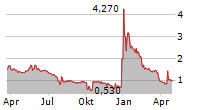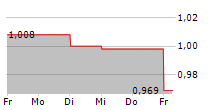
Publication in Kidney Medicine Highlights Benefits of DSR 2.0 for Sequana Medical's Direct Sodium Removal Heart Failure Program and Board Composition Update
More efficient sodium and fluid removal, and improved safety versus dextrose-based approaches
Board changes to improve efficiency and meet gender diversity requirements
Ghent, Belgium - 27 November 2024- Sequana Medical NV (Euronext Brussels: SEQUA) (the "Company" or "SequanaMedical"), a pioneer in the treatment of fluid overload in liver disease, heart failure and cancer, today announces the publication in the prestigious peer-reviewed journal Kidney Medicine regarding the Company's proprietary DSR 2.0, used in its Direct Sodium Removal program, a potential therapy for the treatment of cardiorenal syndrome and diuretic resistance in heart failure. The publication can be accessed here.
Dr. Jeffrey Testani, Associate professor at Yale University commented:"This manuscript describes the pre-clinical to first in-human development of the first solution specifically designed to remove sodium from our patients. All commercially available peritoneal solutions were designed with a primary goal of cleaning toxins from the blood, whereas DSR 2.0 was created to specifically meet the unmet clinical need of removing salt and water. The results were truly impressive with ~4X greater sodium removal with DSR 2.0 compared to a commercially available solution. This new tool will allow significant improvement in the care of our diuretic resistant cardio-renal syndrome patients".
Ian Crosbie, Chief Executive Officer of Sequana Medical, added: "We are delighted with this publication highlighting the improved safety and efficacy of our proprietary DSR 2.0 vs dextrose-based approaches. These results build on clinical proof of concept published in European Journal of Heart Failure for DSR as a potential drug therapy for diuretic resistance and cardiorenal syndrome in heart failure using our DSR 1.0 product. The results of the first patients in the US MOJAVE study using our advanced DSR 2.0 product support the enhanced efficacy demonstrated in this excellent paper. We believe DSR's ability to virtually eliminate the need for loop diuretics for many months post-treatment represents a breakthrough in treatment options, and address one of the leading drivers of healthcare costs."
The paper details pre-clinical and clinical studies to develop an optimised solution for removal of sodium and water. This builds upon the initial proof of concept studies published in Circulation demonstrating that DSR 1.0 increased sodium removal four-fold compared to commercially available peritoneal dialysis solutions. In previous experiments in humans, one litre of DSR 1.0 with a dwell of two hours removed on average 4.5g of sodium with a net ultrafiltration volume of 700mL; whereas in this paper, 0.5L of DSR 2.0 with a dwell of 24 hours removed ~9g of sodium with a net ultrafiltration volume of 2,500mL.
In line with Sequana Medical's drive to improve cost efficiency and to meet the Belgian requirements for gender diversity prior to January 1, 2025, Douglas Kohrs and Kenneth MacLeod have stepped down from the board.
Pierre Chauvineau, Chairman of the board of Directors of Sequana Medical commented: "We thank Doug and Ken for their hard work and great contributions to the company, and wish them well. Their input has been key in bringing Sequana Medical to where it is today."
For more information, please contact:
Sequana Medical
Investor relations
E: IR@sequanamedical.com
T: +32 (0)9 496 17 27
About DSR, a disease-modifying heart failure drug therapy tackling cardiorenal syndrome (CRS)
Cardiorenal syndrome is a key clinical challenge in heart failure and results from the combined vicious cycle of dysfunction of the heart and kidney. Despite the complex pathophysiology, the resultant clinical profile is thought to manifest as a self-reinforcing negative feedback cycle characterized by decreased glomerular filtration, increased renal sodium avidity, and congestion, despite escalating diuretic doses.
No current therapies have been shown to improve patient outcomes in this complex and poorly understood indication. Reducing congestion is a key element of therapy but loop diuretics exacerbate many of the core mechanisms thought to underly CRS. Through effective control of the volume status for an extended period of time and thereby avoiding the negative consequences of loop diuretics, DSR has the potential to break the negative feedback cycle of this clinical challenge.
Extensive analysis of patients in the RED DESERT and SAHARA studies shows the benefit from DSR therapy on i) volume status, ii) normalized diuretic response and dramatically reduced loop diuretic dosing, iii) improvement in kidney function, iv) neurohormonal status and signalling, as well as v) cardiovascular parameters. In these patients there were no congestion-related re-hospitalizations, a one class improvement in their NYHA status and a reduction of 75% in their predicated one-year mortality (based on the Seattle Heart Failure model). Initial data from the non-randomized cohort in the US MOJAVE study support these findings and indicated that DSR is safe and well tolerated, restores diuretic response and improves cardio-renal health.
Results of the first three patients in the non-randomised cohort of MOJAVE, the Company's US Phase 1/2a study of DSR 2.0 for treatment of patients with diuretic-resistant heart failure, confirmed the dramatic and durable improvement in their diuretic response and virtual elimination of loop diuretic requirements. Three months post-completion of DSR therapy, i) the diuretic response was nearly normalized with a mean increase of 326% in six hour urinary sodium excretion vs baseline, and ii) all patients remained on no or low dose loop diuretics, with a reduction of at least 95% vs baseline.
About Sequana Medical
Sequana Medical NV is a pioneer in treating fluid overload, a serious and frequent clinical complication in patients with liver disease, heart failure and cancer. This causes major medical issues including increased mortality, repeated hospitalizations, severe pain, difficulty breathing and restricted mobility. Although diuretics are standard of care, they become ineffective, intolerable or exacerbate the problem in many patients. There are limited effective treatment options, resulting in poor clinical outcomes, high costs and a major impact on their quality of life. Sequana Medical is seeking to provide innovative treatment options for this large and growing "diuretic resistant" patient population. alfapump® and DSR® are Sequana Medical's proprietary platforms that work with the body to treat diuretic-resistant fluid overload, delivering demonstrated clinical benefit through reduced paracentesis for patients and reducing costs for healthcare systems.
The Company's Premarket Approval (PMA) application for the alfapump was submitted to the US FDA in December 2023 and accepted for substantive review in January 2024, having reported positive primary and secondary endpoint data from the North American pivotal POSEIDON study in recurrent or refractory ascites due to liver cirrhosis. US market approval of the alfapump is anticipated before the end of Q1 2025 with US commercial launch planned for H2 2025.
Results of the Company's RED DESERT and SAHARA proof-of-concept studies in heart failure support DSR's mechanism of action as breaking the vicious cycle of cardiorenal syndrome. All three patients from the non-randomized cohort of MOJAVE, a US randomized controlled multi-center Phase 1/2a clinical study, have been successfully treated with DSR, resulting in a dramatic improvement in diuretic response and virtual elimination of loop diuretic requirements. The independent Data Safety Monitoring Board approved the start of the randomized MOJAVE cohort of up to a further 30 patients, which is planned after alfapump US PMA approval. Sequana Medical is listed on the regulated market of Euronext Brussels (Ticker: SEQUA.BR) and headquartered in Ghent, Belgium. For further information, please visit www.sequanamedical.com.
Important Regulatory Disclaimers
The alfapump® system is currently not approved in the United States or Canada. In the United States and Canada, the alfapump system is currently under clinical investigation (POSEIDON Trial) and is being studied in adult patients with refractory or recurrent ascites due to liver cirrhosis. DSR® therapy is still in development and it should be noted that any statements regarding safety and efficacy arise from ongoing pre-clinical and clinical investigations which have yet to be completed. There is no link between DSR therapy and ongoing investigations with the alfapump system in Europe, the United States or Canada. Note: alfapump® and DSR® are registered trademarks.
Forward-looking statements
This press release may contain predictions, estimates or other information that might be considered forward-looking statements. Such forward-looking statements are not guarantees of future performance. These forward-looking statements represent the current judgment of Sequana Medical on what the future holds, and are subject to risks and uncertainties that could cause actual results to differ materially. Sequana Medical expressly disclaims any obligation or undertaking to release any updates or revisions to any forward-looking statements in this press release, except if specifically required to do so by law or regulation. You should not place undue reliance on forward-looking statements, which reflect the opinions of Sequana Medical only as of the date of this press release.
Attachments
- 241127 Press release_Publication DSR data_Kidney Medicine (ENG) (https://ml-eu.globenewswire.com/Resource/Download/efd8b040-6784-411a-ada9-46972d04aecf)
- 241127 Press release_Publication DSR data_Kidney Medicine (NL) (https://ml-eu.globenewswire.com/Resource/Download/064e5560-7422-485a-a9d3-93e7c7ce4781)



